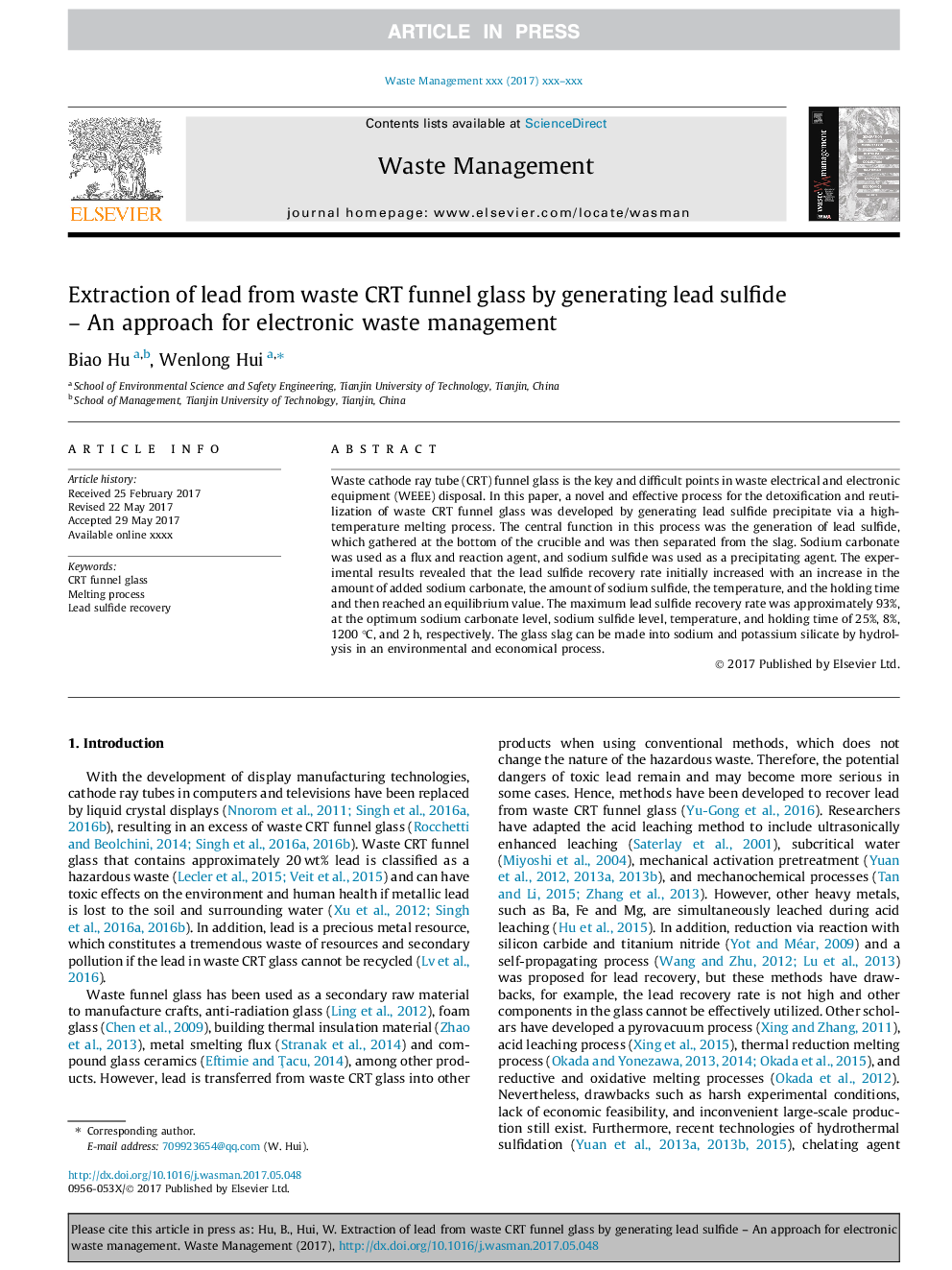| Article ID | Journal | Published Year | Pages | File Type |
|---|---|---|---|---|
| 5756660 | Waste Management | 2017 | 6 Pages |
Abstract
Waste cathode ray tube (CRT) funnel glass is the key and difficult points in waste electrical and electronic equipment (WEEE) disposal. In this paper, a novel and effective process for the detoxification and reutilization of waste CRT funnel glass was developed by generating lead sulfide precipitate via a high-temperature melting process. The central function in this process was the generation of lead sulfide, which gathered at the bottom of the crucible and was then separated from the slag. Sodium carbonate was used as a flux and reaction agent, and sodium sulfide was used as a precipitating agent. The experimental results revealed that the lead sulfide recovery rate initially increased with an increase in the amount of added sodium carbonate, the amount of sodium sulfide, the temperature, and the holding time and then reached an equilibrium value. The maximum lead sulfide recovery rate was approximately 93%, at the optimum sodium carbonate level, sodium sulfide level, temperature, and holding time of 25%, 8%, 1200 °C, and 2 h, respectively. The glass slag can be made into sodium and potassium silicate by hydrolysis in an environmental and economical process.
Keywords
Related Topics
Physical Sciences and Engineering
Earth and Planetary Sciences
Geotechnical Engineering and Engineering Geology
Authors
Biao Hu, Wenlong Hui,
